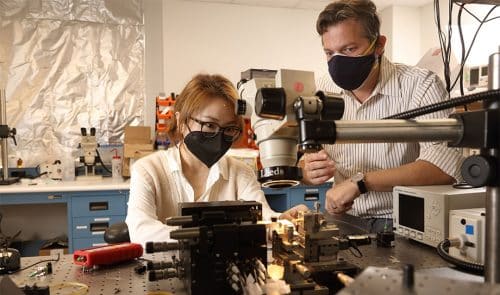This development will transform the types and capabilities of military and commercial radar and communication systems.
Xu Yi, Assistant Professor of Electrical and Computer Engineering at the University of Virginia, is directing a research team that is working on the next significant technical leap in radar and global positioning systems, as part of a national push to use photonics to develop these technologies.
Yi’s goal is to transfer the purity and stability of high-frequency optical communications to the microwave regime, which is where most defence positioning, navigation, and timing systems operate. To put this in context, the system they’re working on will have frequencies up to 110 GigaHertz, which is 20 times greater than WiFi and three times higher than 5G.
Yi and his colleagues Andreas Beling, Electrical and Computer Engineering Professor, and Steven M. Bowers, Associate Professor of Electrical and Computer Engineering, have made breakthroughs in high-speed light detection and ultra-low noise circuits, bringing photonic technology closer to reality.

“Conventional approaches start with low frequencies and multiply up, to arrive at higher frequencies that are useful for sensing and communications,” Beling said. “Our project tackles the problem from the other side, to start high and divide down, converting light into radio waves.”
Yi specialises in a microresonator-based frequency comb, or microcomb, which is a form of photonic device. Photons are efficiently converted from single to many wavelengths by the microcomb. Yi’s optical frequency division breakthroughs pave the way for a chip-sized, low-noise system that can be continuously programmable over a wide range.
At a single frequency, an ideal oscillator produces a flawless signal. Real-world systems, such as military radars and commercial 5G systems, are far less reliable since they operate at fluctuating frequencies, a restriction known as phase noise. “Phase noise — how much the signal wiggles — is the metric everyone cares about,” Beling said. “Once you have a super-stable signal that is generated in a small, integrated package, this opens up new possibilities in applications like communications, positioning and ranging.”
“In this specific setting, if we’re chasing low noise, photonics has a key advantage over electronics,” Yi said. “With this program funding, we have the opportunity to form a very good team and push that to the limit, to see how far this technology can go.” Further, Yi and his team will demonstrate at least an order of magnitude improvement in one of three goal metrics: size, phase noise, or frequency span.






